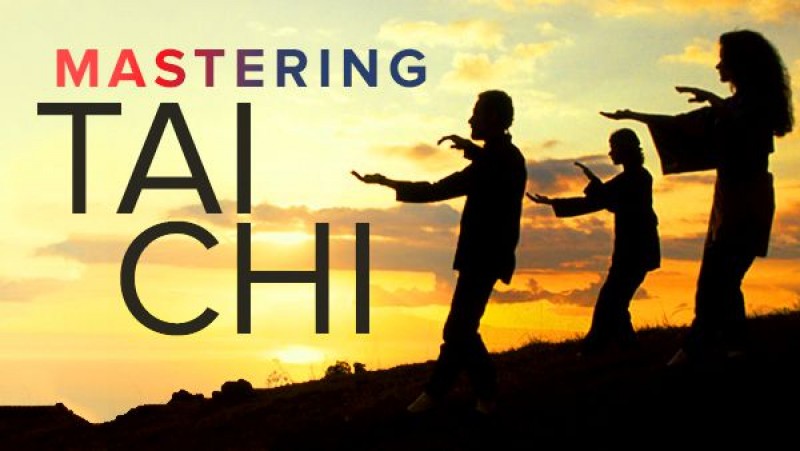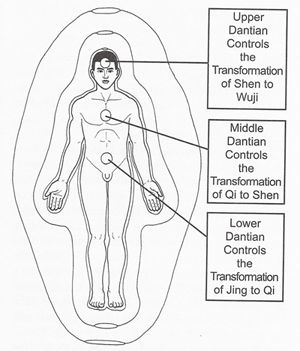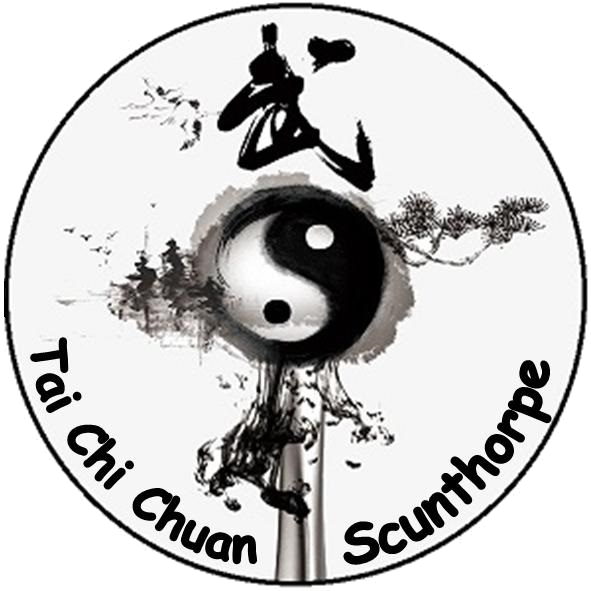The Tai Chi Theory



Introduction:
Since Chinese martial arts were introduced into Western society many years ago, many questions still remain. The most common questions today are the following:
- Where does the style I am learning come from?
- What are its theoretical roots and foundation?
- How good are the styles which I am practicing?
- What are the differences between the internal and the external styles?
- what are the differences between the sounthern and the northern styles?
- How do we define hard and soft styles?
- How is Japanese karate different from Korean taekwondo, and how are these styles different from Chinese martial arts?
- How do these styles relate to eath other?
In order to answer these questions, you must first study and understand the history of Chinese martial arts. Knowledge of its past history and an understanding of its roots will enable you to appreciate the consequences that exist today.
Taijiquan (Tai chi chuan), its theoretical roots and the concept of yin and yang itself, can be traced back four thousand years. From this roots, the essence of taijiquan originated. Specifically, the style was created in the Daoist monastery of Wudang Mountain, Hubei province. The original motivation behind taijiquan creation was twofold: self-defense and spiritual cultivation.
History of the Chinese Martial Arts
Descriptions of Chinese martial arts can be traced to the Xia Dynasty which existed more than 4000 years ago.
Their origin is attributed to self-defense needs, hunting activities and military training in ancient China.
Hand-to-hand combat and weapons practice were important components in the training of Chinese soldiers.
From this beginning, Chinese martial arts proceeded to incorporate different philosophies and ideas into its
practice expanding its purpose from self-defense to health maintenance and finally as method of self-cultivation.
Conversely, the influence of martial arts ideals in civilian society can be found in poetry, fiction, and
eventually film. Chinese martial arts are now an integral element of Chinese culture. If you are interested in
more information on Chinese martial arts history I recommend and advise to read these articals.
A Brief History of the Chinese Martial Arts by Dr. Yang, Jwing-Ming:
A Brief History of the Chinese Martial Arts
History of Chinese Martial Arts by: The editor MetalAllen.
History of the Chinese Martial Arts
General concepts of taichi chuan
From Wuji to Yin and Yang
What Is The Wuji?
Chinese ideograms for Wuji (infinite space embodied in between matter, energy and spirit) is a compound of Wu "without, nothing, nothingness" and Ji "ridgepole, highest point, the ultimate, extreme." Together, the term "Wuji" translates as "ultimate emptiness," and describes the vast expansiveness of infinite space. In ancient China, this concept was symbolically represented by the formation of a never-ending circle.
The initial emptiness, the empty circle, in this context it is translated as "without polarity". Wuji references are found in Chinese classic texts associated with diverse schools of Chinese philosophy, including Taoism, Confucianism. The ancient Chinese believed that the Wuji, extending from the Divine, is an infinite ocean of microscopic vibrations, from which all the realms of creation and all the different energetic worlds are constructed. Wuji is a difficult concept to grasp with the mind, even for those well-versed in Eastern cosmological paradigms. What it refers to is essentially elusive, being "empty" or without substance. It is thus traditionally depicted as an empty circle. Read the full article by: Neeshee Pandit.
Taiji
Taiji (great pole, great polarity) is a Chinese cosmological term for the "Supreme Ultimate" state of undifferentiated absolute and
infinite potential, the oneness before duality, from which Yin and Yang originate, can be compared with the old Wuji
"without ridgepole".
Taiji is a condition arising from wuji and giving rise to yin and yang. Any philosophy that asserts
two elements such as the yin-yang of Chinese philosophy will also look for a term to reconcile the two, to ensure that both belong
to the same sphere of discourse. The term supreme ultimate "Taiji" performs this role in the philosophy of the Book of Changes "Yi Jing".
Ying Yang
In Ancient Chinese philosophy, yin and yang is a concept of dualism, describing how seemingly opposite or contrary forces may actually be complementary, interconnected, and interdependent in the natural world, and how they may give rise to each other as they interrelate to one another.
Yin Yang, Two halves that together complete wholeness. Yin and yang are also the starting point for change.The word Yin comes
out to mean "shady side" and Yang "sunny side". This concept of duality forming a whole. We encounter examples
of Yin and Yang every day. As examples: night (Yin) and day (Yang), female (Yin) and male (Yang). Over thousands of years, quite a
bit has been sorted and grouped under various Yin Yang classification systems. The nature of Yin and Yang flows and changes with
time. A simple example is thinking about how the day gradually flows into the night.The summation of Yin and Yang form a whole.
One effect of this is: as one aspect increases the other decreases to maintain the overall balance of the whole.
In fact, Yin and Yang
are in everything, and most things are a little bit of both. An eggshell is Yang, but the egg inside is Yin. Wheat in the field is Yang,
but once it is harvested, it becomes Yin. One can turn into the other, and the best things in life lie at the confluence of the two.
To continu ...
The Precept of Tai Chi Chouan
The principal precepts of tai chi
Core precepts that should be followed in order to make tai chi into more than a mere dance or empty exercise. These precepts are summarized as follows
- Have more presence. Practice mindfulness.
- Have more poise. Stand and move with dignity.
- Have more peace. Loosen excess tension in mind and body
- Have better proprioception. Intentionally distinguish yin and yang and know where you are.
- Have better prolepsis. Use your mind intent to lead the movement.
- Have more persistance. Practice, practice, practice.
- Have more patience. Don't push the river.
The Precept of Presence
It would be very difficult to overemphasize this initial precept. In some fashion or another all the subsequent precepts rely on or reach their full fruition mediated by the precept of presence.
To have presence refers to having presence of mind. Another way of saying this is: be mindful.Mindfulness is a feeling of clarity
of experience rooted in the present moment. It is awareness of what is, not preoccupation with what was or will be. It is extremely
difficult for modern persons to be "in the moment". We habitually spend very little time on the here and now, preferring
to anticipate the future or relive the past, usually formulating fantasies or abstractions in the process. Instead of living the
moment, we are pushed into the past, or sucked into the future.
Why is living in the moment an important skill? Living in the
present reduces stress. Nothing reduces stress more than being intensely and vividly aware of the courrent moment. Much of the mental
tension and anguish of stress is centered around expectations of what will happen or might happen, or reliving some bit of past suffering.
So what can one do to breack this vicious cycle? One trick is to really feel what you are doing at the time.
Here is another wonderful technique to develop mindfulness that will prove its worth with practice: For whatever activity in which you are engaged, no matter how mundane, strive to accomplish it more slowly than you otherwise would. The point is that by being aware of living in the present moment. It's virtually guarenteed that living slowly, on purpose, wil help you to be mindful. You will experience less stress in your life, and it will help you to deal with the stress that is unavoidable.
Living in the present makes true tai chi possible. One of the worst things a practitioner can do is to be thinking about something else while doing the forms. You might be thinking about needing to clean the garage, or thinking about aconversation you had recently, or some problem consumes your mind. One might say that if you are thinking of something else, you aren't really doing tai chi at all - you are merely going thought the motions with little beneficial effect, or some muscles may be getting exercised, some extra blood is being pumped, but you are not doing tai chi, no matter how outwardly beautiful the forms may be. Having presence of mind - being mindful - is precisely what is required for tai chi to be successful.
The Precept of Poise
Tai chi encompasses thirteen primary postural elements. They are historically known as the Ba Men Wu Bu, or Eight gates and the Five Steps. They represent directional dispositions of energy. Although they are sometimes called the "Thirteen postures of tai chi", they are really the building blocks from which the various tai chi postures are formed. These building blocks combine in such way that any particular movement can usually be seen to be composed of a blend of perhaps two or three of these fundamental elements.
When you practice any kind of tai chi you are expressing one or more of the following energies, so in a way, they represent the DNA of tai chi.
The Eight gates (Ba Men) are: Peng (wardoff), Lu (rollback), Ji (squeeze), An (push), Cai (pluck),
Lie (split), Zhou (elbow) and Kao (bump).
The Five Steps (wu Bu) are: Jin bu (step forward), Tui bu (step backward), Zuo gu (beware of the left),
You pan (look to the right) and Zhong ding (central equilibrium).
These energies are discussed in further detail in the section "General concepts of taichi-chuan".
For the time being, relative to the precept of poise, we will focus particularly on one of the five steps, zhong dingwhich is usually translate into English
as "Central equilibrium" (paradoxically, does not necessarily involve taking a step).
Central equilibrium is an extremely important core principle for the proper performence of tai chi. Imagine, if you will, a vertical line that passes through
the center of the body. The upper direction of that vertical plumb line passes through the top of the head. The downward direction of the vertical plumb line
passes through the torso, through the center of gravity of the body (the dantian), and out the bottom of the bodytorso between the genitals and the anus.
For easy of reference, this line will henceforth be called the "plumb line"
Central equilibrium means that the tai chi player must be acutely
aware of the verticality or incline of the plumb line. Poise can be defined as "balance, stability, easy and dignity of manner". No adminition seems
to better convey to the practitioner what is necessary than to say, "Stand with dignity". When one stands with dignity, the head naturally ascends
upward along the plumb line. The spine gently elongates. The chin tucks down slightly, and the shoulders relax downward to hang off the stable core produced
by the ascending plumb line.
Words terminology in taijiquan
What does Wuji mean?
Wuji (or Wu Chi) is a classical Tai Chi posture known in most styles of Tai Chi Chuan. The literal translation means "nothing, nothingness, or empty" for Wu and "limits, end, extreme boundary" for chi or ji (the chi is the same life force of chi but it has a different connotation)
What is the absence of Yin and Yang called?
Wuji is a state of emptiness or simply a single point in space. ... According to Yi Jing (Book of Change), originally the universe was in a Wuji state. Later, due to the pivotal action of Taiji, Two Polarities (Liang Yi) (Yin and Yang) were discriminated.
What is the meaning of Ying and Yang
The ubiquitous yin-yang symbol holds its roots in Taoism/Daoism, a Chinese religion and philosophy. Yin and yang is a complex relational concept in Chinese culture that has developed over thousands of years. Briefly put, the meaning of yin and yang is that the universe is governed by a cosmic duality, sets of two opposing and complementing principles or cosmic energies that can be observed in nature.
Who created the Yin Yang?
In Chinese mythology, Yin and Yang were born from chaos when the universe was first created and they are believed to exist in harmony at the centre of the Earth. During the creation, their achievement of balance in the cosmic egg allowed for the birth of Pangu (or P'an ku), the first human.
What is the concept of yin and yang?
noun. two complementary principles of Chinese philosophy: Yin is negative, dark, and feminine, Yang positive, bright, and masculine. Their interaction is thought to maintain the harmony of the universe and to influence everything within it.
The Xin meaning
Literally, xin refers to the physical heart, though it is sometimes translated as "mind" as the ancient Chinese believed the heart was the center of human cognition. For this reason, it is also sometimes translated as "heart-mind" in another way "the emotional spirit". It has a connotation of intention, yet can be used to refer to long-term goals.
The Yi meaning
Yi, literally "justice, moral, righteousness; meaning," is an important concept in Confucianism. It involves a moral disposition to do good, and also the intuition and sensibility to do so competently. Yi can be viewed as spirit of wisdom.
What does Shen mean?
Shen can be translated as "Spirit" or "Mind", and implies our consciousness, mental functions, mental health, vitality, and our "presence". Shen lives in the Heart, where it retires to sleep during the night.
What is Shen energy?
Shen is your spiritual energy, it's what makes you feel you have a purpose in life, that you love your life, that you're happy to be alive in the first place.
What is Jing energy?
Jing is a powerful substance that forms the essence of who and what we are. It is the primal energy of our life. Jing energy is the deep foundational energy reserves of the body and it is this energy that determines one's ultimate vitality and the quantity and quality of one's lifespan.
